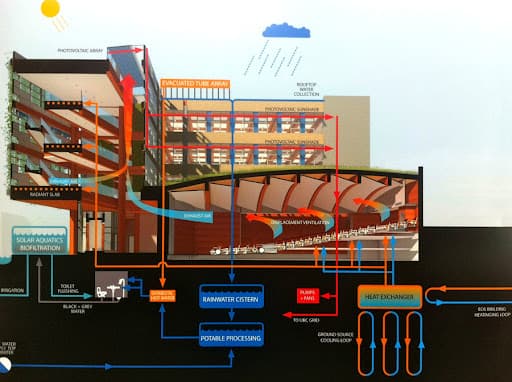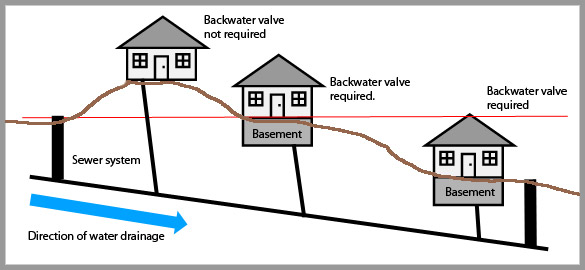The Design of Your Home's Plumbing System Explained
The Design of Your Home's Plumbing System Explained
Blog Article
We have come across this great article about The Inner Workings of Your Home's Plumbing down the page on the web and decided it made sense to share it with you here.

Understanding exactly how your home's plumbing system functions is important for every single homeowner. From providing tidy water for drinking, food preparation, and showering to safely getting rid of wastewater, a properly maintained pipes system is vital for your family's health and comfort. In this detailed guide, we'll check out the intricate network that comprises your home's plumbing and offer ideas on maintenance, upgrades, and handling typical concerns.
Introduction
Your home's plumbing system is greater than just a network of pipelines; it's an intricate system that guarantees you have accessibility to clean water and effective wastewater elimination. Knowing its elements and just how they work together can assist you avoid expensive fixings and guarantee everything runs smoothly.
Fundamental Parts of a Pipes System
Pipelines and Tubes
At the heart of your pipes system are the pipes and tubes that lug water throughout your home. These can be made of various materials such as copper, PVC, or PEX, each with its advantages in terms of sturdiness and cost-effectiveness.
Fixtures: Sinks, Toilets, Showers, etc.
Fixtures like sinks, bathrooms, showers, and tubs are where water is utilized in your house. Recognizing exactly how these components attach to the pipes system aids in identifying issues and preparing upgrades.
Shutoffs and Shut-off Factors
Valves manage the flow of water in your plumbing system. Shut-off valves are important throughout emergencies or when you need to make repair work, enabling you to separate parts of the system without disrupting water flow to the whole residence.
Water Supply System
Key Water Line
The major water line attaches your home to the local supply of water or a private well. It's where water enters your home and is dispersed to numerous components.
Water Meter and Pressure Regulator
The water meter measures your water use, while a pressure regulatory authority makes certain that water streams at a safe pressure throughout your home's pipes system, protecting against damages to pipes and fixtures.
Cold Water vs. Warm water Lines
Recognizing the distinction between cold water lines, which provide water straight from the primary, and warm water lines, which lug warmed water from the water heater, aids in repairing and planning for upgrades.
Water drainage System
Drain Pipes Water Lines and Traps
Drain pipes carry wastewater far from sinks, showers, and bathrooms to the sewer or septic system. Traps protect against sewer gases from entering your home and also catch particles that could create obstructions.
Ventilation Pipes
Air flow pipelines enable air into the water drainage system, stopping suction that might slow water drainage and create catches to vacant. Appropriate air flow is necessary for keeping the honesty of your pipes system.
Relevance of Correct Water Drainage
Ensuring proper drainage prevents backups and water damages. Routinely cleaning drains and keeping traps can prevent costly repairs and extend the life of your pipes system.
Water Heating Unit
Types of Water Heaters
Water heaters can be tankless or traditional tank-style. Tankless heaters warmth water as needed, while storage tanks keep heated water for prompt usage.
How Water Heaters Connect to the Pipes System
Recognizing exactly how water heaters link to both the cold water supply and hot water distribution lines helps in identifying problems like insufficient hot water or leakages.
Upkeep Tips for Water Heaters
Frequently flushing your hot water heater to eliminate debris, examining the temperature settings, and inspecting for leakages can extend its lifespan and boost energy efficiency.
Usual Plumbing Issues
Leakages and Their Causes
Leakages can occur due to maturing pipes, loose installations, or high water pressure. Dealing with leakages quickly stops water damage and mold and mildew development.
Blockages and Clogs
Blockages in drains pipes and commodes are typically caused by flushing non-flushable items or a buildup of oil and hair. Making use of drain screens and bearing in mind what goes down your drains can prevent blockages.
Indicators of Plumbing Troubles to Watch For
Low water stress, slow drains pipes, foul odors, or unusually high water expenses are indicators of potential pipes troubles that should be attended to immediately.
Pipes Maintenance Tips
Routine Examinations and Checks
Schedule annual pipes examinations to catch concerns early. Search for signs of leaks, rust, or mineral buildup in taps and showerheads.
Do It Yourself Upkeep Tasks
Simple jobs like cleansing tap aerators, looking for commode leakages making use of color tablet computers, or protecting subjected pipes in cold environments can protect against major plumbing concerns.
When to Call a Specialist Plumber
Know when a pipes concern calls for specialist experience. Trying complicated repair work without proper expertise can cause more damage and greater fixing expenses.
Upgrading Your Plumbing System
Factors for Updating
Upgrading to water-efficient fixtures or replacing old pipelines can boost water high quality, decrease water bills, and increase the value of your home.
Modern Pipes Technologies and Their Advantages
Explore technologies like smart leak detectors, water-saving commodes, and energy-efficient water heaters that can save money and lower environmental impact.
Expense Considerations and ROI
Calculate the upfront prices versus long-term savings when taking into consideration pipes upgrades. Numerous upgrades spend for themselves with reduced energy bills and less fixings.
Ecological Impact and Conservation
Water-Saving Components and Appliances
Mounting low-flow faucets, showerheads, and commodes can considerably reduce water use without sacrificing efficiency.
Tips for Reducing Water Usage
Easy behaviors like taking care of leaks promptly, taking much shorter showers, and running complete loads of laundry and dishes can preserve water and lower your energy bills.
Eco-Friendly Pipes Options
Think about lasting pipes products like bamboo for floor covering, which is durable and environment-friendly, or recycled glass for countertops.
Emergency Readiness
Steps to Take Throughout a Pipes Emergency
Know where your shut-off valves lie and how to shut off the water supply in case of a burst pipeline or major leak.
Importance of Having Emergency Situation Get In Touches With Useful
Maintain contact info for local plumbing technicians or emergency situation services easily offered for quick action throughout a plumbing dilemma.
Do It Yourself Emergency Situation Fixes (When Relevant).
Momentary repairs like using air duct tape to patch a leaking pipeline or placing a bucket under a dripping tap can decrease damage up until a professional plumbing gets here.
Conclusion.
Comprehending the composition of your home's pipes system encourages you to keep it properly, saving time and money on fixings. By following regular maintenance routines and remaining informed regarding modern plumbing innovations, you can ensure your plumbing system operates effectively for years to come.
Understanding Your Home Plumbing System: A Comprehensive Guide
Plumbing System: The Lifeline of Your Home
At its core, the plumbing system is designed to perform two primary functions: bring fresh water into your home and remove wastewater. The system is a network of pipes, fixtures, and other components that transport water and sewage. Residential plumbing systems include potable water supply lines, drain-waste-vent (DWV) systems, and various plumbing fixtures that make water use in daily tasks possible.
Key Components:
Water Supply: This part of your plumbing system brings municipal water into your home, passing through the main water supply line. It s responsible for supplying all water needs, from drinking to bathing.
Drainage System: It carries waste and water away from your home to the sewer or septic system. This system includes all the piping within your home that leads to external sewage or septic systems.
Vent System: An essential yet often overlooked component, the vent system allows sewer gases to escape and lets air into the drainpipes, ensuring water and waste move correctly through the system.
Fixture: More Than Just Taps and Toilets
Plumbing fixtures are the most interactive parts of the plumbing system, including faucets, showers, toilets, and sinks. Each fixture is connected to the plumbing system and plays a role in either the delivery of freshwater or the disposal of waste and wastewater.
Types of Fixtures:
Faucets and Sinks: Used for washing hands, dishes, and other daily water needs.
Toilets: Dispose of human waste through the sewage system.
Bathtubs and Showers: Provide bathing facilities, requiring both hot and cold water supply.
Water Supply: The Source of Life
The water supply system is a critical component, ensuring that potable water is available throughout your home for various uses, including drinking, cooking, and cleaning. This system consists of pipes that distribute water to different parts of the house, controlled by valves to regulate the water flow.
Types of Plumbing: Materials and Methods
Various types of plumbing systems and materials are used in residential settings, each with its advantages and applications. From copper and PVC pipes for water supply to cast iron and ABS for drainage, the choice of materials can impact the longevity and efficiency of your plumbing system.
https://intownplumbingtx.com/articles/home-plumbing-system-guide/

Understanding Your Home Plumbing System: A Comprehensive Guide
Plumbing System: The Lifeline of Your Home
At its core, the plumbing system is designed to perform two primary functions: bring fresh water into your home and remove wastewater. The system is a network of pipes, fixtures, and other components that transport water and sewage. Residential plumbing systems include potable water supply lines, drain-waste-vent (DWV) systems, and various plumbing fixtures that make water use in daily tasks possible.
Key Components:
Water Supply: This part of your plumbing system brings municipal water into your home, passing through the main water supply line. It s responsible for supplying all water needs, from drinking to bathing.
Drainage System: It carries waste and water away from your home to the sewer or septic system. This system includes all the piping within your home that leads to external sewage or septic systems.
Vent System: An essential yet often overlooked component, the vent system allows sewer gases to escape and lets air into the drainpipes, ensuring water and waste move correctly through the system.
Fixture: More Than Just Taps and Toilets
Plumbing fixtures are the most interactive parts of the plumbing system, including faucets, showers, toilets, and sinks. Each fixture is connected to the plumbing system and plays a role in either the delivery of freshwater or the disposal of waste and wastewater.
Types of Fixtures:
Water Supply: The Source of Life
The water supply system is a critical component, ensuring that potable water is available throughout your home for various uses, including drinking, cooking, and cleaning. This system consists of pipes that distribute water to different parts of the house, controlled by valves to regulate the water flow.
Types of Plumbing: Materials and Methods
Various types of plumbing systems and materials are used in residential settings, each with its advantages and applications. From copper and PVC pipes for water supply to cast iron and ABS for drainage, the choice of materials can impact the longevity and efficiency of your plumbing system.
https://intownplumbingtx.com/articles/home-plumbing-system-guide/
I hope you enjoyed our topic about The Inner Workings of Your Home's Plumbing. Thank you for taking the time to browse our article post. Enjoyed our write up? Please share it. Help someone else locate it. I treasure your readership.
Details Report this page